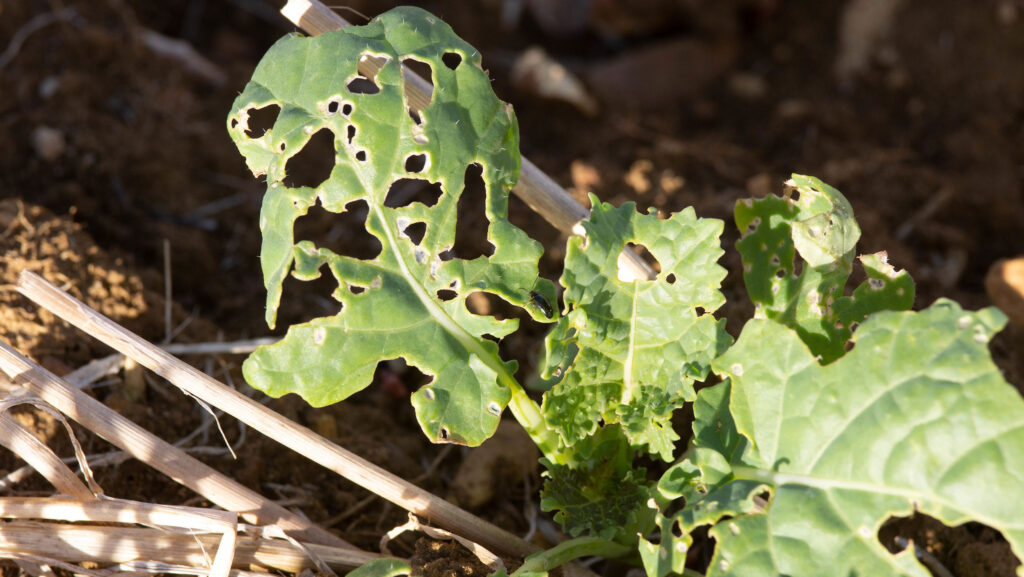AHDB to track cabbage stem flea beetle migration this autumn
 © Tim Scrivener
© Tim Scrivener Oilseed rape (OSR) growers will be able to track the cabbage stem flea beetle (CSFB) migration this autumn, thanks to an AHDB project which is monitoring the pest at several winter oilseed rape sites across England.
The project is part of a long-term effort to determine the factors that affect adult flea beetle migration, with the ultimate ambition of predicting the start, duration and intensity of migration each year.
The work will focus on sites in England, where the pest is most problematic.
See also: Smart trap alerts OSR growers to pest threats
In addition to the manual monitoring of yellow water traps for adult beetles, the work will evaluate an automated monitoring technique.
Drill timing
Since neonicotinoid seed treatments were withdrawn in OSR a decade ago, AHDB has invested in numerous projects on the potential of integrated pest management (IPM) approaches.
AHDB lead crop protection scientist Sacha White points out that AHDB work has highlighted that sowing dates is a particularly important part of IPM strategies, with a few weeks potentially making the difference between a good-yielding crop and a written-off crop.
“The most critical damage occurs when young crops encounter peak beetle migration, especially when soil moisture is low. Predicting migration windows would help farmers determine the lowest-risk point to sow OSR.”
Monitoring method
NIAB will lead the latest phase of the monitoring work, which includes assessments of CSFB at seven core monitoring sites.
At these sites, yellow water traps will be inspected for adult beetles twice a week during the main migration risk period. Symptoms of crop invasion by larvae will also be noted.
Local variations in CSFB beetle pressure will also be assessed at strategic locations around one of the core sites in Hertfordshire/Essex.
The monitoring data will strengthen a long-term data set that shows how CSFB migration varies annually and regionally in response to local conditions.
The information will be used to further develop and validate a decision support system that predicts local migration.
Earlier this year, Bayer launched an automated yellow water trap (MagicTrap) that catches insects and identifies and counts contents at regular intervals using an integrated camera and artificial intelligence.
The MagicTraps, which have been used commercially in Germany for the past two seasons and supplied by Bayer at no cost to the project, will be co-located at the monitoring sites.
This will allow comparisons between automated and manual monitoring techniques to be made.
Several farmers, mainly from AHDB’s Farm Excellence Network (which includes Monitor Farms and Strategic Cereal Farms), will also test MagicTraps this autumn.
To provide an indication of migration in 2024, updates on cumulative numbers of adult CSFB at monitoring sites will be published on the dedicated AHDB webpage ahdb.org.uk/csfb.

